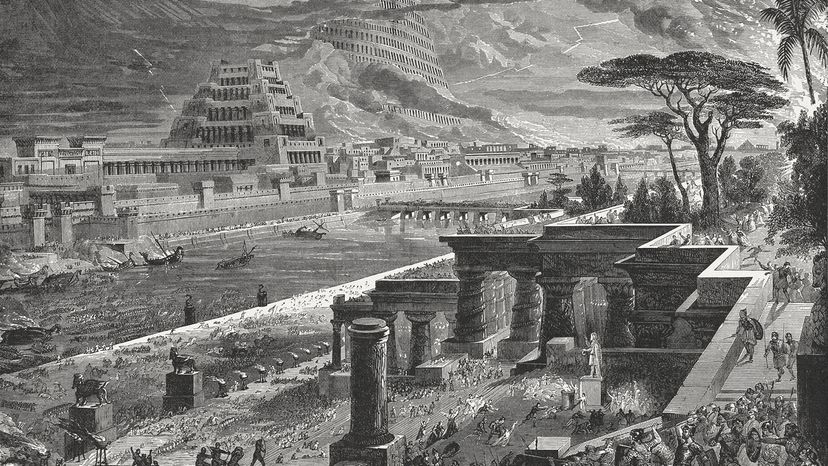The name Babylon conjures images of ancient grandeur, biblical tales of excess, and the cradle of Western Civilization. History remembers Nebuchadnezzar II, who reigned from 605 to 562 B.C.E., as the architect of Babylon’s most magnificent era, transforming it into a stunning tribute to Marduk, their creator deity. His rule extended the Babylonian empire across vast territories, from Egypt and Syria to the Kingdom of Judah. Jerusalem fell to his forces in 597 B.C.E., resulting in the exile of thousands of Israelites to Babylon, a sorrowful event vividly depicted in the Bible.
 Illustration of Babylon falling to Cyrus the Great
Illustration of Babylon falling to Cyrus the Great
Babylon’s reputation in Judeo-Christian tradition is complex. While Nebuchadnezzar’s reign was marked by imperial strength and architectural marvels, his devotion to pagan gods cast Babylon as a symbol of decadence and sin. The Book of Revelation in the New Testament famously features the “Whore of Babylon,” a figure draped in opulence and holding a cup of abominations, embodying moral corruption.
Yet, beyond the religious symbolism, historical accounts paint a different picture of Nebuchadnezzar’s Babylon. Historians note his strategic relocation of conquered populations, a method to prevent uprisings and consolidate his empire. This policy, coupled with ambitious building projects, propelled Babylon into becoming the largest and most advanced metropolis of its time.
Nebuchadnezzar’s architectural legacy is breathtaking. He fortified Babylon with immense city walls and conceived the Processional Way, a spectacular avenue adorned with vibrant glazed tiles depicting lions and dragons. This grand pathway culminated at the Ishtar Gate, the city’s imposing northern entrance.
Among his most celebrated works was the temple dedicated to Marduk. This towering ziggurat, rising 300 feet (91 meters), was described by the Greek historian Herodotus as a series of eight stacked towers, ascended by a spiraling ramp. This structure, known as the “house of the frontier between heaven and Earth,” is believed by many scholars to have inspired the biblical Tower of Babel narrative.
So, Where Is Babylon Today? The answer lies in modern-day Iraq, approximately 85 kilometers (55 miles) south of Baghdad. The ancient city was situated in Mesopotamia, the fertile land between the Tigris and Euphrates rivers, a region recognized as the very cradle of civilization. While the splendor of Nebuchadnezzar’s Babylon has faded with time and conflict, the remnants of this once-great city still stand as a testament to human ingenuity and the enduring power of history. Archaeological efforts continue at the site, striving to preserve and unveil further secrets of Babylon for generations to come.

